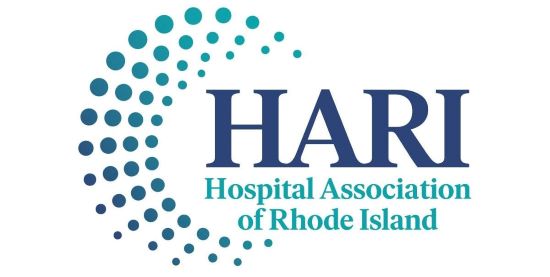Healthcare Study Highlights Challenges Faced by Hospitals in Rhode Island

Providence, R.I. — A new comprehensive study by the Rhode Island Foundation examining the financial structure of hospitals in Rhode Island revealed significant disparities in reimbursement rates. Specifically, it found that the average inpatient reimbursement from private insurers is 20% greater in Massachusetts and Connecticut compared to Rhode Island, while outpatient reimbursement in Connecticut is 40% higher than in Rhode Island. Adding to these challenges, Rhode Island’s acute care hospitals contend with a higher proportion of Medicare and Medicaid payments, totaling 74.2% of discharges, which are known for not adequately covering care costs.
“The Hospital Association of Rhode Island thanks the Rhode Island Foundation for working with hospitals to base the conversation around the state’s healthcare system in factual information and comparisons across the region,” said HARI President Teresa Paiva Weed. “Although the study refrains from providing recommendations, its findings validate the concerns that HARI and its member hospitals have consistently voiced regarding the financial difficulties inherent in operating within a regionalized healthcare economy.”
The study also uncovered that Rhode Island small group and individual market plans are less expensive compared to other New England states while offering more generous benefits. Data showed that Rhode Island offers one of the lowest individual market premiums in the nation. While Rhode Island small group premiums are similar to Massachusetts, they are 20% less expensive than Connecticut.
Overall, the study highlighted interconnected data that contribute to financial and operational challenges facing hospitals in Rhode Island. These challenges include disparities in private insurer reimbursement rates, compounded by a high volume of Medicaid and Medicare patients, increased expenditures, and continued decline in operating margins from negative 0.8% in 2018 to negative 3.4% in 2022.
“These intertwined challenges create a complex environment that requires collaborative efforts. We look forward to continuing to work with all involved in order to build a sustainable healthcare landscape that prioritizes patient well-being and supports the vital work of healthcare professionals in Rhode Island,” said Paiva Weed.
Key findings from the report include:
- Massachusetts and Connecticut’s average inpatient reimbursement paid by private employer-sponsored health plans are 20% higher than Rhode Island.
- Connecticut’s average outpatient reimbursement paid by private employer-sponsored health plans is 40% higher than Rhode Island.
- Rhode Island’s average Small Group market and Individual market premiums are lower than Massachusetts and Connecticut and offer more generous benefits.
- Rhode Island individual market premiums are amongst the lowest in the nation
- Health system operating margins declined for Rhode Island, Massachusetts and Connecticut hospitals and health systems from FY 2018 to FY 2022. Rhode Island’s statewide operating margin trended down from negative 0.8% in FY 2018 to negative 3.4% in FY 2022.
- Rhode Island’s acute hospital operating revenue per staffed bed is lower compared to the Boston-Cambridge-Newton area and ranks 4th lowest among the 13 metropolitan areas in Rhode Island, Connecticut, and Massachusetts.
- Rhode Island’s Medicare/Medicaid and Self Pay acute hospitals’ inpatient payer mix (based on discharges) is higher than both Connecticut and Massachusetts and accounts for 74.2% of discharges.
- In 2021, Rhode Island had an overall 5% lower inpatient acute hospital utilization rate than CT and a 12% lower inpatient acute hospital utilization rate than MA. All three states’ acute utilization rates were age-adjusted.
- Rhode Island’s 2021 ED visit utilization rate (28.94 visits per 100) was similar to MA’s statewide ED visit utilization and notably lower than CT’s ED visit utilization rate of (36.89 visits per 100).
- In 2021 Rhode Island had 25% fewer RNs per 100,000 population than Massachusetts.
- In 2022, Rhode Island had the lowest supply of personal care and service workers, and physician assistants compared to CT and MA.
- In 2020, Rhode Island had 122 primary care physicians (PCPs) per 100,000 population compared to 108 PCPs and 136 PCPs per 100,000 in CT and MA, respectively.
The study commissioned by the Foundation and conducted by Manatt Health was supported by funding partners Blue Cross & Blue Shield of Rhode Island, Care New England, Lifespan, and South County Health. The report utilized publicly available metrics to examine the financial structure and performance of Rhode Island’s acute care hospitals and health systems, comparing trends with Connecticut and Massachusetts. The full report can be accessed at https://rifoundation.org/.